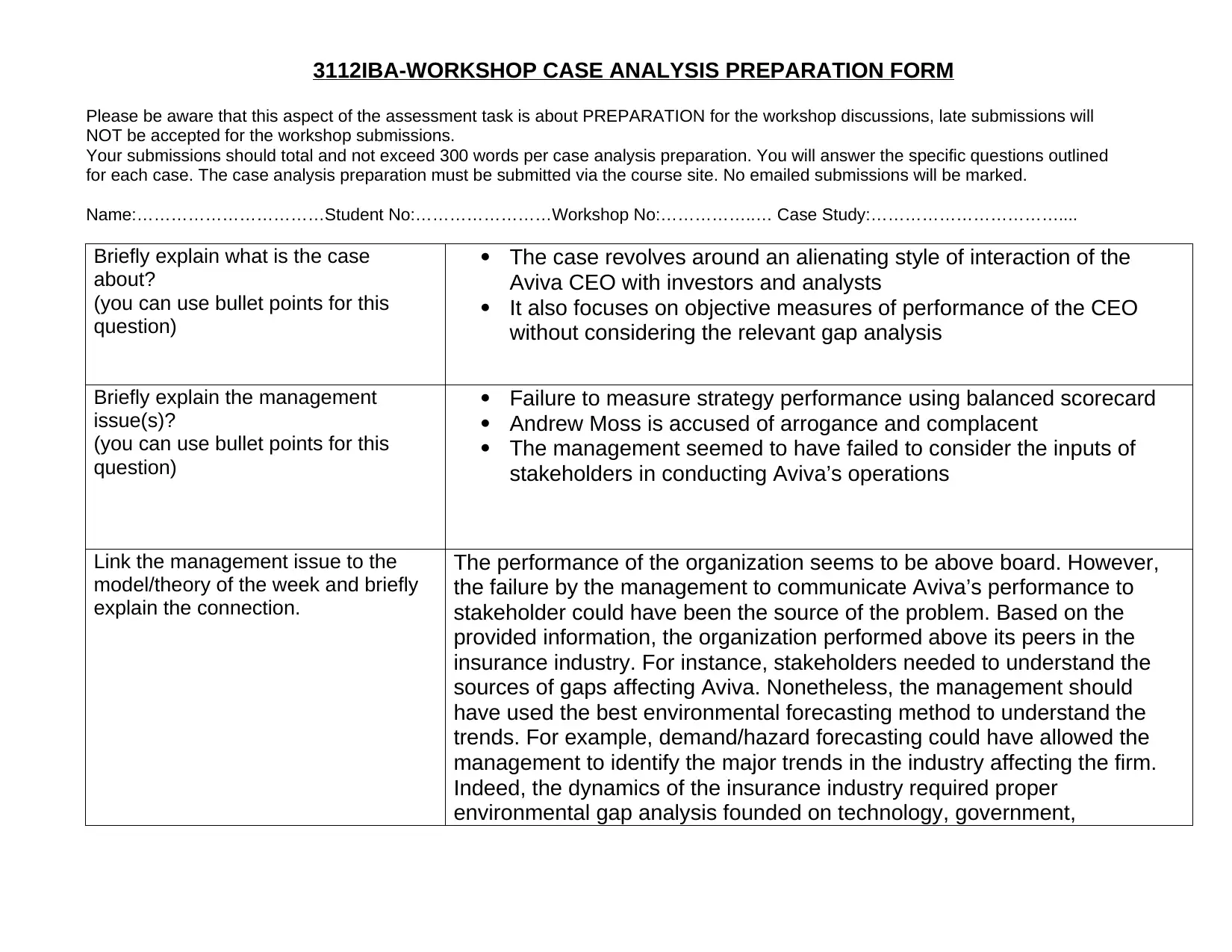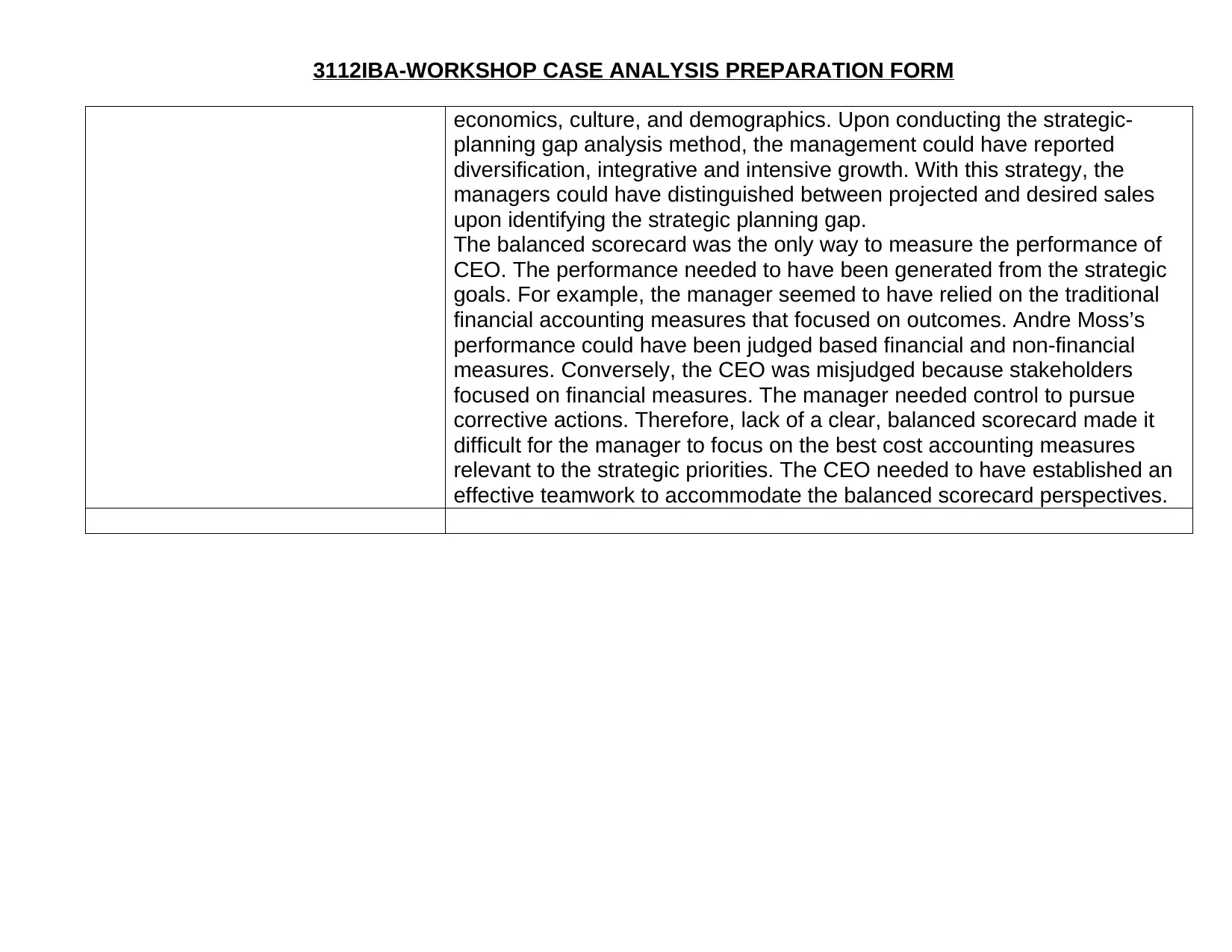3112IBA Workshop Case Analysis Preparation
VerifiedAdded on 2020/03/13
|2
|514
|64
Case Study
AI Summary
This assignment focuses on preparing a case analysis for the 3112IBA workshop. Students must analyze a case involving the Aviva CEO's management issues, including performance measurement and stakeholder communication. The analysis should not exceed 300 words and must be submitted via the course site. Key management issues include the failure to use a balanced scorecard and the CEO's perceived arrogance. Students are encouraged to link these issues to relevant management theories and models discussed in class.
1 out of 2








![[object Object]](/_next/static/media/star-bottom.7253800d.svg)